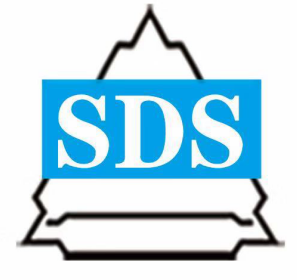Tech Trends: The Role of Digital Platforms in Concrete Fiber Suppliers Networks
In an era defined by technological advancements, the concrete industry is undergoing a digital transformation that extends to every facet of its operations. Concrete fiber suppliers, recognizing the potential of digital platforms, are leveraging technology to enhance efficiency, collaboration, and overall business performance. This exploration delves into the evolving landscape of concrete fiber supplier networks, highlighting the pivotal role of digital platforms in shaping the industry's future.
Revolutionizing Communication and Collaboration
Digital platforms are revolutionizing the way concrete fiber suppliers communicate and collaborate within their networks. Cloud-based solutions and integrated software systems enable seamless communication across various stages of the supply chain. From order placements to production updates and delivery schedules, digital networks enhance transparency and efficiency, reducing the risk of errors and delays.
The implementation of digital platforms provides concrete fiber suppliers with unprecedented visibility into their supply chains. Real-time data analytics allow suppliers to track raw material inventories, monitor production processes, and optimize distribution routes. This level of visibility enhances decision-making capabilities, enabling suppliers to respond swiftly to market fluctuations, demand changes, and unforeseen challenges.
Enhancing Customer Experience and Engagement
Digital platforms empower concrete fiber suppliers to offer a more personalized and interactive experience for their customers. Online portals and apps allow customers to customize their orders, access real-time product information, and track deliveries. These interactive platforms not only streamline the ordering process but also enhance customer engagement, fostering stronger and more collaborative relationships between suppliers and construction professionals.
The integration of predictive analytics into digital platforms enables concrete fiber suppliers to anticipate market demand more accurately. By analyzing historical data, market trends, and external factors, suppliers can forecast future demand with greater precision. This proactive approach allows suppliers to optimize production schedules, prevent overstocking or shortages, and align their offerings with the evolving needs of the construction industry.
Optimizing Operations and Efficiency
Digital platforms are at the forefront of transforming concrete fiber manufacturing through smart technologies and process automation. Internet of Things (IoT) devices and sensors are deployed in production facilities to monitor equipment performance, track energy consumption, and ensure quality control. Automation of routine tasks enhances operational efficiency, reduces human error, and ultimately contributes to a more streamlined and cost-effective manufacturing process.
Efficient inventory management is critical in the concrete fiber supply chain, and digital platforms play a key role in optimizing this aspect. Smart warehousing solutions, equipped with sensors and RFID technology, enable suppliers to track inventory levels in real-time. Automated systems can trigger reorder alerts, preventing stockouts or excess inventory. This level of precision in inventory management minimizes waste, reduces costs, and ensures a more agile response to market demands.
Future Outlook and Continuous Innovation
Concrete fiber suppliers leveraging digital platforms are not only embracing current technological trends but are also positioning themselves for future innovations. The integration of artificial intelligence (AI), blockchain, and advanced data analytics promises to further revolutionize the industry, enhancing efficiency, traceability, and sustainability. As the concrete industry continues its digital evolution, suppliers at the forefront of these technological trends are poised to lead the way toward a more connected, efficient, and innovative future.
 English
English 한국어
한국어 français
français Deutsch
Deutsch русский
русский português
português العربية
العربية tiếng việt
tiếng việt ไทย
ไทย Polska
Polska Nederland
Nederland